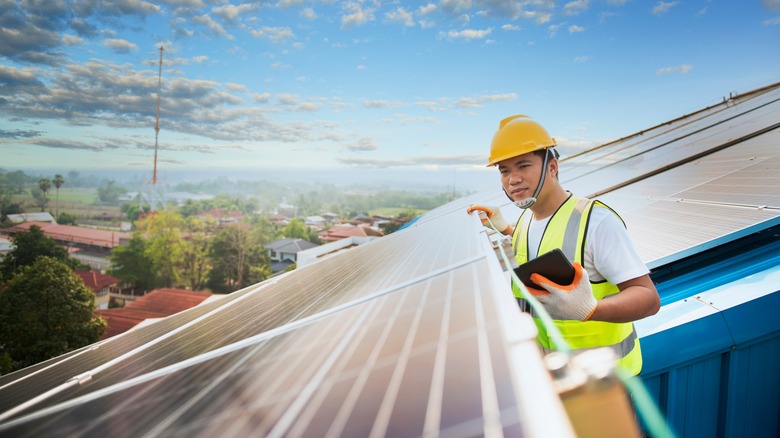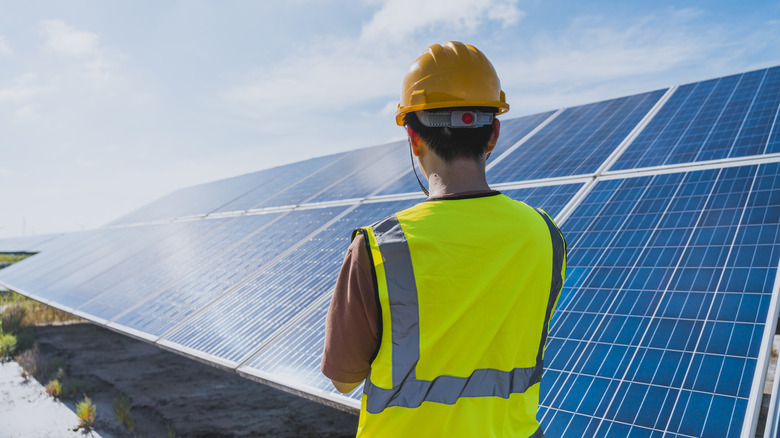What Percentage Of Solar Panels Are Made In China?
Thanks to the massive increase in the popularity of solar power across the U.S. over the past several years, solar panels are becoming an increasingly common sight across the country. Given how popular solar power has become, it would make sense for U.S. based solar companies to manufacture at least some of these panels in the country. The truth, however, is that as of 2024 — as per data from the International Energy Agency (IEA) — more than 80% of global solar panel production happens in China.
Today, China is home to the world's top 10 suppliers of solar manufacturing equipment, and the country's massive investments into the field have contributed to the overall cost of various types of solar cells coming down by up to 80% by IEA estimates. While China enjoys the typical advantages of a middle-income country — including a large labor pool and relatively lower wages — the country has also benefited from favorable policies formulated by the government. These policies ensured that, in 2021 alone, China exported more than $40 billion worth of solar equipment to the world.
China today is so far ahead in the solar game that the country will likely continue to dominate this space well into 2025 and beyond. In fact, based on China's planned and under-construction solar-related projects, the country's share in the global production of crucial solar panel components like polysilicon, ingot, and wafers may exceed 95%.
U.S. efforts to reduce Chinese dependence have largely failed
Between 2014 and 2023, there has been an eight-fold increase in the installed solar power capacity across the U.S. While this has played a role in the U.S. decreasing its dependence on fossil fuels for power, as things stand now, the country is now dependent on Chinese made solar cells in order to meet its renewable energy targets.
The U.S. government is aware of this, and has taken several measures to lessen the dependence on China for solar, including efforts in the Inflation Reduction Act in 2022. The most recent example of this would be the White House's decision to increase tariffs on solar cells imported from China from 25% to 50%.
Besides making Chinese-made solar panels more expensive to purchase, the U.S. Government is heavily incentivizing local manufacturing of solar power components. The government has also promised tax breaks and loan programs to rejuvenate the solar components manufacturing space in the country. These efforts have also resulted in companies pledging nearly $17 billion in planned investment in the solar energy space. The U.S. government is hopeful that these policy changes will increase manufacturing capacity eight-fold, with significant results showing up by the year 2030.
While the Biden administration claims that these measures will foster the development of solar capacity outside of the U.S., it remains to be seen how big an impact these policies will end up making.

